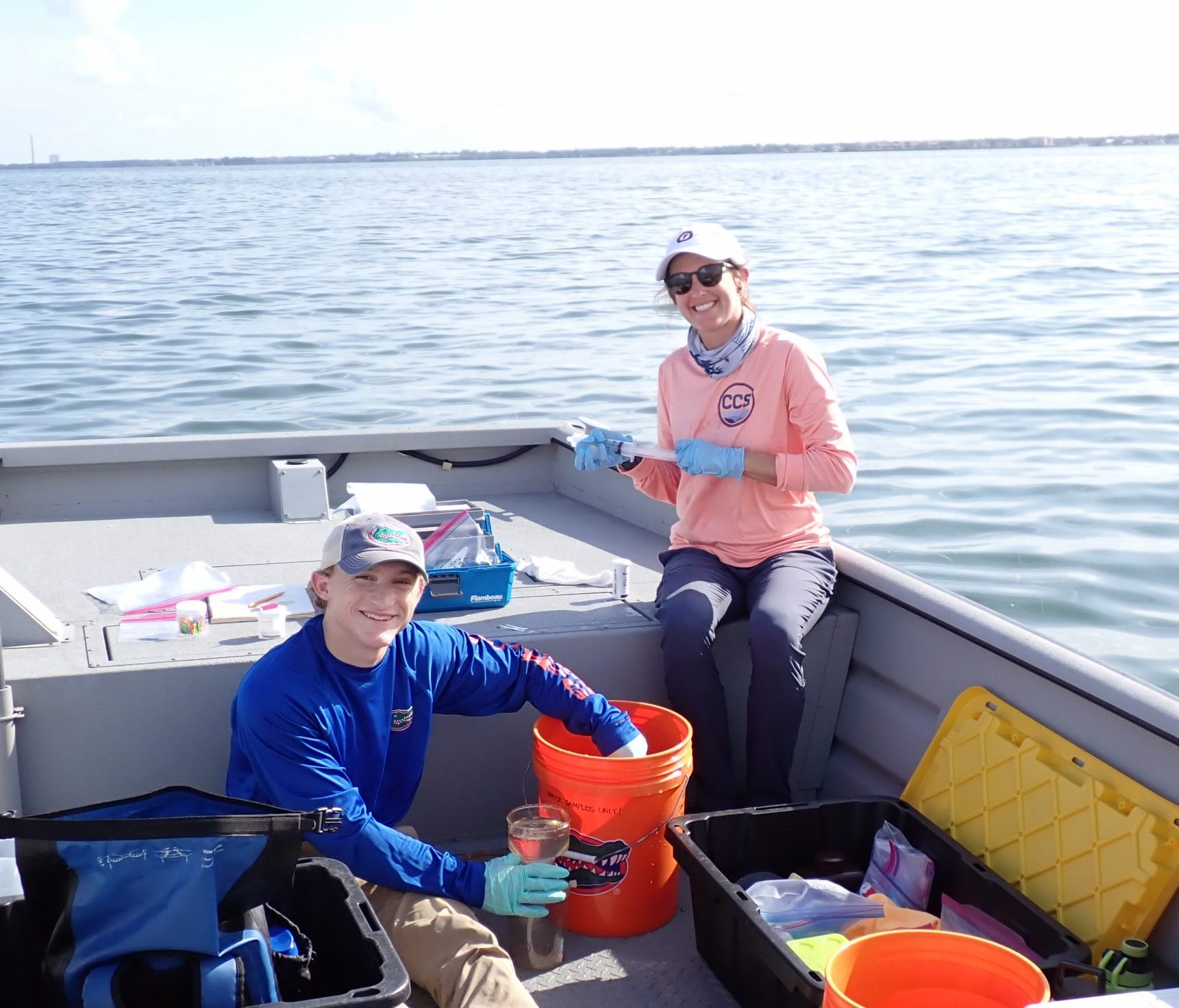A yearlong study tracking the movement of wastewater discharged in an emergency from the retired Piney Point phosphate processing plant in 2021 shows that the pollution spread much farther than expected.

“This research highlights the importance of protecting coastal water quality and ensuring that infrastructure failures do not negatively impact Tampa Bay water quality,” said Elise Morrison, Ph.D., an assistant professor in the Department of Environmental Engineering Sciences and lead author of a paper on the study. “Supporting long-term monitoring programs and collaborative research is critical to address complex challenges and find solutions to maintain coastal water quality and ecosystem health.”
In March 2021 a leak in the liner of a holding pond at the inactive Piney Point phosphate processing facility prompted the release of more than 200 million gallons of nutrient-rich water into Port Manatee and Tampa Bay to prevent flooding and avoid the collapse of the gypsum stack, the containment structure where phosphogypsum is stored. This water contained high levels of nutrients that can lead to an increased growth of phytoplankton and harmful algal blooms (HABs), which, in turn, can negatively impact coastal habitats and human health.
By collecting and analyzing samples bi-weekly for a year after the release, researchers from the University of Florida, University of Florida’s Whitney Laboratory for Marine Bioscience, Sarasota Bay Estuary Program and Tampa Bay Estuary Program found that the polluted wastewater spread outside of Tampa Bay and as far as Tarpon Springs, over 30 miles away.

The research team monitored how phytoplankton communities responded to the nutrients released from Piney Point and found diatoms, a type of phytoplankton, grew quickly after the event, likely due to available nutrients near the discharge point. While the diatoms observed were not HAB-forming species, some species can have negative implications for the health of fish populations and contribute to hypoxic conditions, the decline of oxygen levels in water. High levels of red tide (Karenia brevis) blooms were also observed in the summer of 2021, which likely resulted from transport into the Bay from the Gulf of Mexico, followed by amplification by the nutrient–loaded discharges.
Given the impacts of climate change, the need for monitoring programs and adaptive management strategies will increase.
“Baseline data from Bay monitoring programs can help us assess how the bay’s ecosystems respond to anthropogenic events, like the Piney Point discharge, as well as natural events, such as hurricanes,” said Morrison. “It’s important to study how infrastructure failures interact with climate change stressors, such as storms and sea level rise, and how they affect coastal water quality and the health of Tampa Bay.”
This research was supported by the National Science Foundation (Award 2130675 to E. Morrison and E. Phlips) and the Ocean Conservancy (award to E. Morrison, E. Phlips, A. Altieri, and C. Angelini).
Related:
Piney Point pollution spread farther than first thought, new study shows by Max Chesnes in Tampa Bay Times
The article, “The response of Tampa Bay to a legacy mining nutrient release in the year following the event,” by Elise Morrison, Edward Phlips, Susan Badylak, Amanda Chappel, Andrew Altieri, Todd Osborne, David Tomasko, Marcus Beck and Edward Sherwood is free to read and can be accessed here.